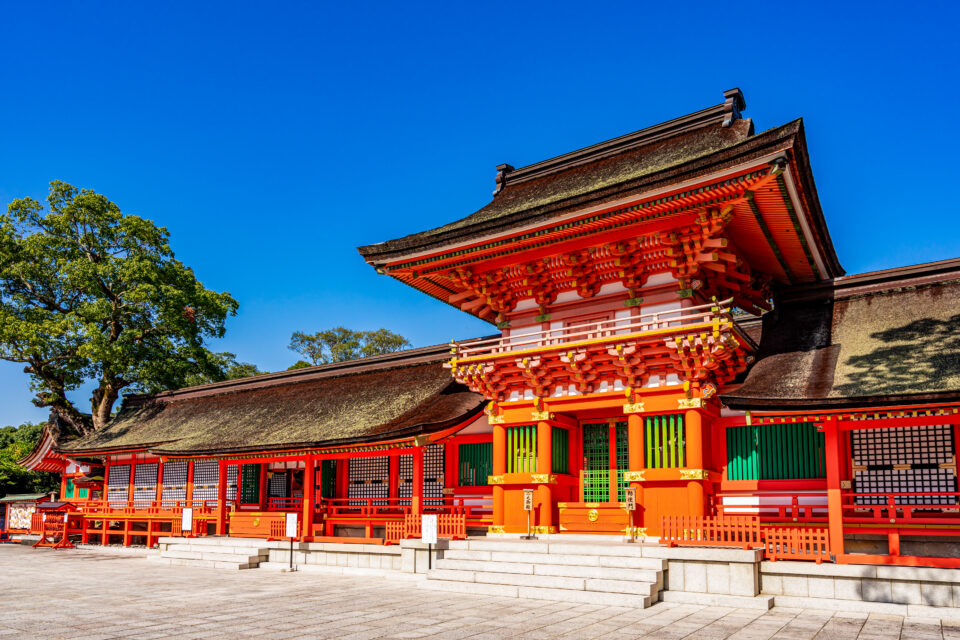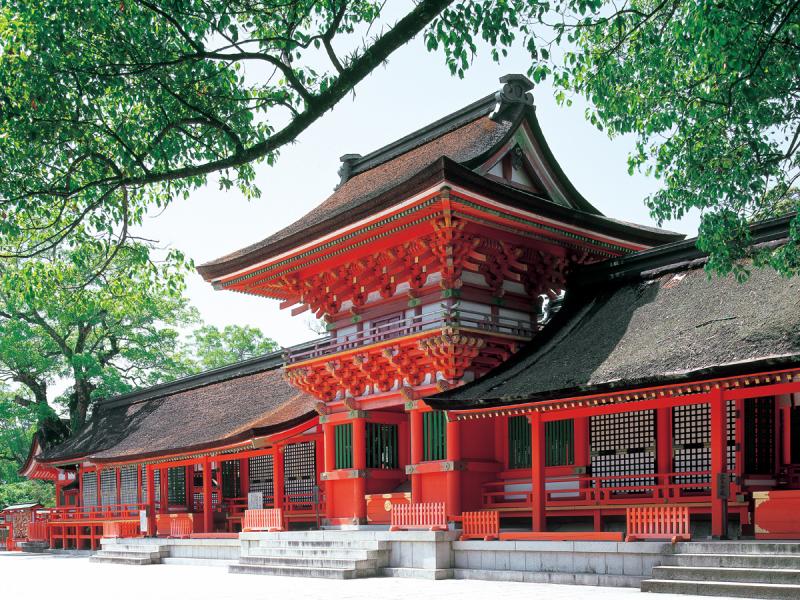

Usa Jingu
The grand head shrine of the 40,000 Hachiman shrines across Japan.
Located in Oita prefecture, Usa Jingu is the first and most important shrine dedicated to Hachiman, the god of war and archery, and boasts a rich history of spiritual and political influence.
History of the Shrine
Founded in the 8th century in Kyushu, Usa Jingu quickly rose to prominence and became the head shrine ('sohongu') for all shrines dedicated to the powerful kami Hachiman. In the Nara period, the shrine's oracle played a significant role in state affairs. In a famous incident, the oracle of Usa declared that an ambitious monk, Dokyo, should not be made emperor, a divine intervention that was believed to have protected the imperial line. This cemented the shrine's political influence.
The shrine was also instrumental in the construction of the Great Buddha (Daibutsu) at Todai-ji in Nara, with the Hachiman kami promising divine assistance in finding the gold and copper needed for the massive statue. This established a deep syncretic link between Shinto's Hachiman and Buddhism, and Hachiman came to be known as one of the first kami to be titled a 'bodhisattva'.
The Enshrined Kami
Hachiman is one of Japan's most important and widely worshipped deities. He is a syncretic god, identified with the spirit of the semi-legendary 15th Emperor, Ojin. This links him to the imperial line and gives him the status of an ancestral protector. His primary domain is that of archery and war, and as such, he was the tutelary god of the Minamoto clan and the entire samurai class.
However, Hachiman is not just a god of war. He is seen as a protector of the nation, a kami of agriculture, and a bringer of peace through strength. His early embrace of Buddhism, where he was given the title 'Daibosatsu' (Great Bodhisattva), shows his role as a bridge between the two great religions of Japan. Worshippers pray to him for victory, protection, and good fortune.
What to See
The shrine grounds are vast and beautiful, set within a tranquil forest. The main complex consists of three main halls connected under one roof, dedicated to Hachiman, his mother (Empress Jingu), and his consort (Hime Okami). These halls are designated National Treasures and showcase a unique architectural style known as 'Hachiman-zukuri', where two distinct buildings are connected. The brilliant vermilion of the halls, bridges, and gates creates a stunning contrast with the surrounding greenery.
The approach crosses a picturesque bridge leading to the main shrine area. The complex is large enough to be explored for several hours, containing a treasure hall with important artifacts, smaller sub-shrines, and peaceful ponds.
Major Festivals
The 'Jinkosai' festival in late July is a major summer event featuring a procession of three ornate 'mikoshi' (portable shrines). A particularly unique festival is the 'Hojoe', a ritual with Buddhist origins where captive animals are released as an act of mercy and a prayer against taking life. This ceremony, held in autumn, underscores the shrine's long history of Shinto-Buddhist syncretism. The New Year period also sees a great number of worshippers visiting the most important Hachiman shrine in the country.
Support Usa Jingu
Your participation helps preserve this sacred site for future generations. Every digital offering contributes to real shrine preservation efforts across Japan.
By making an offering, you become part of a global community honoring Japanese spiritual traditions and supporting the cultural heritage that has been cherished for centuries.